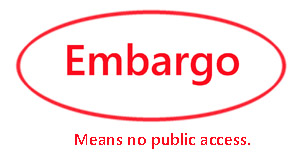Architecture Program
Date of this Version
4-2008
Document Type
Thesis
Citation
M.Arch Thesis, University of Nebraska-Lincoln, May 2008
Abstract
As the price of gasoline continues to rise, traffic congestion threatens to gridlock our city streets, available parking becomes increasingly scarce, and the general public becomes more vocal about these problems, many varied groups of concerned citizens and professionals are proposing a different approach to solving our transportation needs. One approach would be to attack the individual factors comprising each problem. For instance, the price of gasoline is chiefly determined by taxes, supply, and demand. One could then argue we should try to reduce the taxes on gasoline. That would lower the price and then everyone would be happy. However, much of the gasoline tax pays for road construction and maintenance, so this solution is not feasible. No tax money, no roads. The frustrations caused by traffic congestion and parking availability could be solved by constructing more and bigger streets, roads, and freeways, and building more parking facilities, all at the cost of billions of tax dollars. That certainly is a viable solution, one which is employed throughout many cities and towns in the United States. However, one could counter this suggestion by pointing out the high cost of road construction and maintenance, and the real estate resources consumed by our already bloated system of roads. Most importantly, these ideas do not address the larger scale problem: the United States has a obsession with the automobile, probably because it is the most convenient form of transportation widely available. In many cities, automobile ownership provides opportunities unavailable to those who do not own an automobile. Some people are consequently trapped by the unavailability of transportation. Conversely, automobile owners are trapped through traffic congestion and the need to find parking. Both groups are enslaved by the automobile; one with, and one without. This slavery can be broken through the provision of attractive, readily accessible, affordable, and timely public transportation. This will give all citizens the freedom to move and travel as they wish without the need to be chained to an automobile. For these reasons, I propose to develop a mass transit rail system in the Midwest to allow every resident the freedom move about the entire region. The fi nal product of this project will be a train station/transportation hub in Lincoln. Providing a common location for all forms of mass transit to converge together for hassle-free transfer between systems, this transportation hub will allow easy access to all modes of traffic: pedestrian, bicycling, automobiles, buses, street trams, and trains. Alternative means of transport (non-automobile) will be encouraged. This project, while specifically addressing the criticisms surrounding mass transit in the United States through design strategies, will allow for a broader look at how architecture can respond to the need for mass transportation. In addition, I will explore the feasibility and possible implementation of different sustainable models as they relate to transportation, both personal and public. I will also research possible ways to reduce energy consumption in commuter transportation and suggest alternative energy-efficient models for public transportation. This system, when tied-in with a larger network of systems, not only increases transportation availability, but can be considered sustainable economically as well as architecturally. Through greater transport availability, individual cities need not duplicate services, such as a convention center, provided in closely neighboring cities. This allows each city to develop a unique character. My experience traveling throughout Europe with the London Program exposed me to many modes of mass transit I had never before experienced. It was refreshing to live without my own automobile as I relied completely on mass transit across nine countries and through 21 cities. This three-and-a-half month experience provided me with sufficient basic knowledge and personal experience to propose such a system for Lincoln.


Comments
A Terminal Project Presented to the Faculty of The College of Architecture at the University of Nebraska In Partial Fulfi llment of Requirements For the Degree of Master of Architecture, Major: Architecture, Under the Supervision of Professor Nathan Krug. Lincoln, Nebraska: May, 2008
Copyright © 2008 Mark Oquist